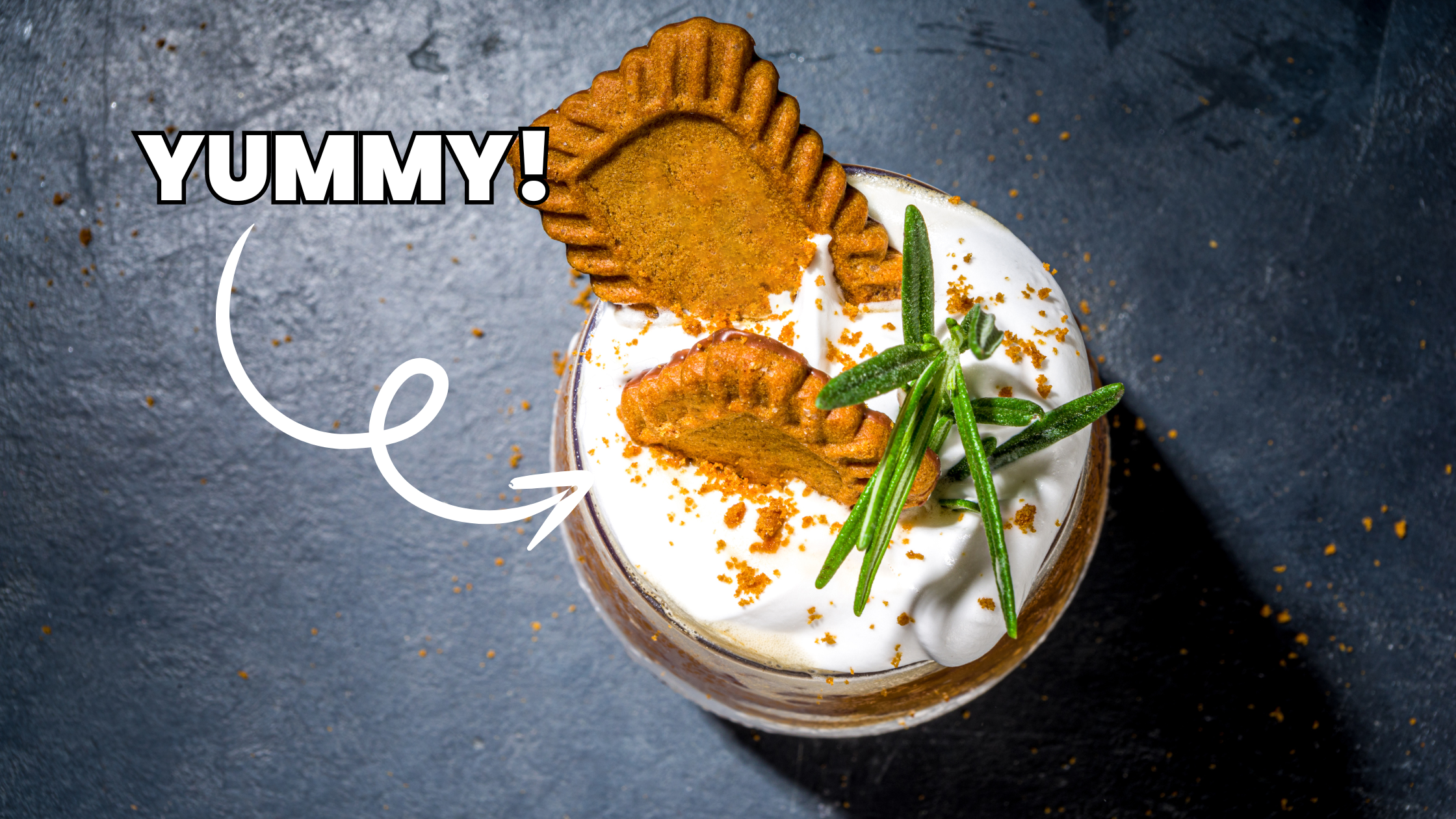Craving something new in your coffee routine?
Enter the cookie butter latte, a delicious trend taking social media by storm, especially on TikTok.
This drink combines the sweet, spiced flavor of cookie butter with the bold richness of espresso, creating a comforting and indulgent beverage.
Whether you’re a coffee lover or just looking for a sweet treat, this latte is the perfect pick-me-up.
Ready to learn how to make it at home? Let’s dive into the recipe!

How To Make A Cookie Butter Latte: At A Glance
- Brew Espresso
- Heat and Froth Milk
- Combine Espresso and Cookie Butter
- Add Frothed Milk
- Garnish and enjoy!
What is Cookie Butter?
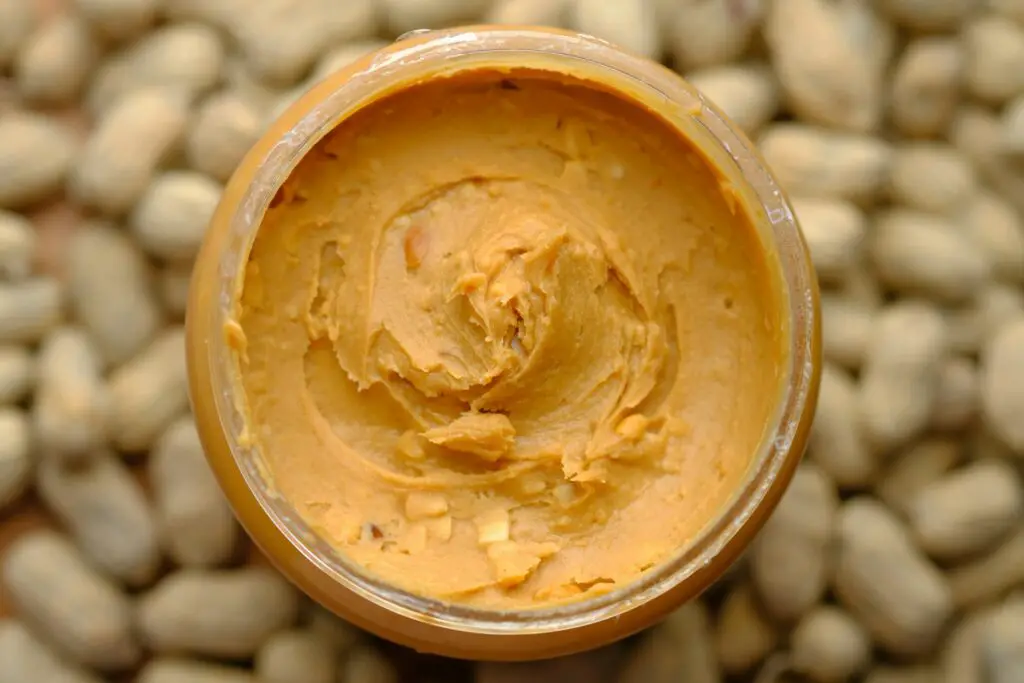
Cookie butter is a delightful spread made from crushed cookies, sugar, and other flavorful ingredients.
Two popular brands are Biscoff and Trader Joe’s.
Biscoff cookie butter originates from Belgium and is made from Speculoos cookies, which are caramelized shortbread cookies with a hint of spices like cinnamon and nutmeg.
Trader Joe’s offers a similar product, often referred to as Speculoos Cookie Butter, which has become a favorite in many households.
The flavor profile of cookie butter is sweet, spiced, and slightly caramelized, making it a beloved ingredient in desserts and drinks.
Its creamy texture and rich taste make it perfect for spreading on toast, adding to recipes, or eating straight from the jar.
The blend of spices and sweetness gives it a unique flavor that pairs well with both sweet and savory dishes.
Cookie butter’s rise to popularity can be traced back to its introduction in Europe, particularly Belgium, where Speculoos cookies have been a traditional treat.
When Biscoff introduced cookie butter, it quickly gained a following.
The spread became more widely known in the United States through airline snacks and eventually became a staple in many American kitchens.
Social media platforms and food blogs further boosted its popularity, showcasing creative uses and recipes that incorporate cookie butter into various dishes.
Today, it’s a beloved ingredient for its versatility and irresistible flavor.
Ingredients Needed
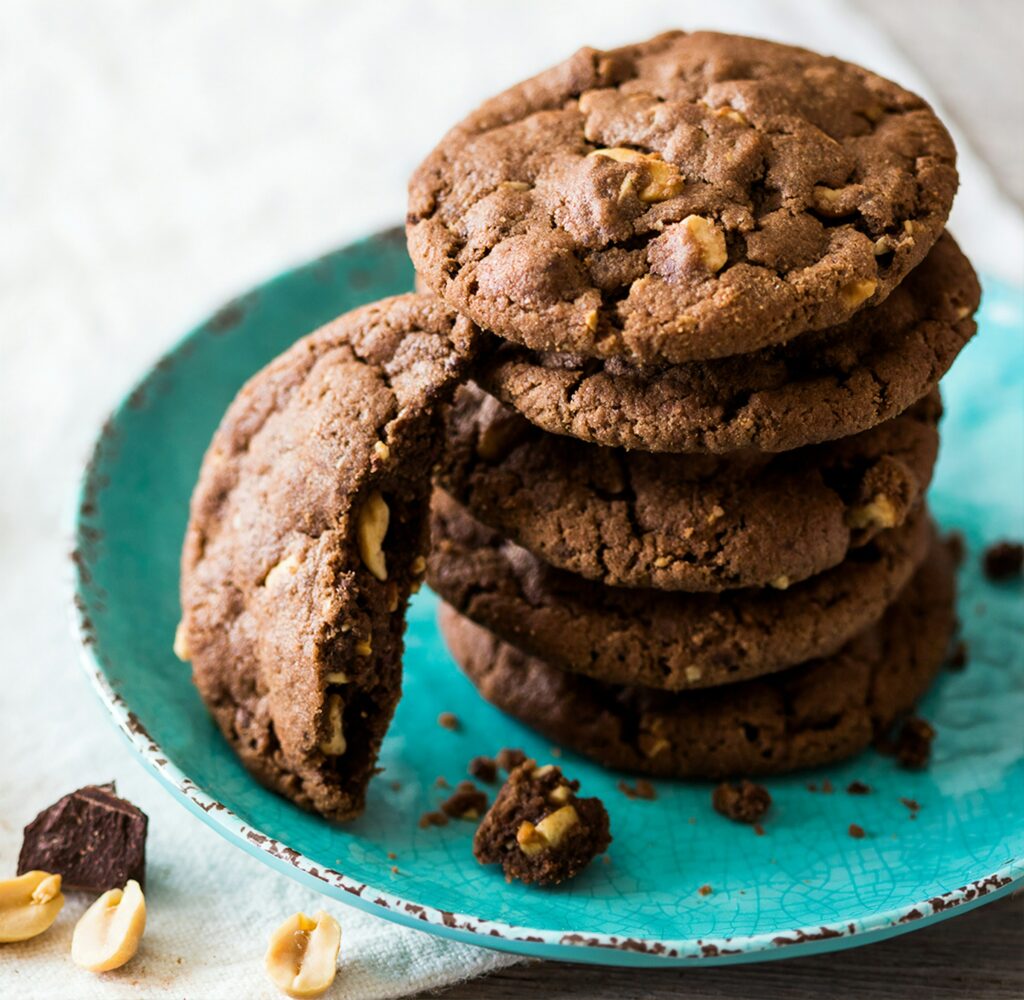
To make a delicious cookie butter latte, you’ll need the following ingredients:
- 2-4 shots of espresso: Adjust the amount based on how strong you like your coffee.
- 12 oz milk of choice: You can use dairy or non-dairy milk such as almond, soy, or oat milk.
- 3 teaspoons cookie butter: Brands like Biscoff or Trader Joe’s are great options.
- Tiny pinch of sea salt: Enhances the flavor and balances the sweetness.
- Whipped cream (for garnish): Adds a creamy, decadent touch to your latte.
- Ground cinnamon (for dusting): Provides a warm, spiced note that complements the cookie butter.
- Warmed cookie butter (for drizzling): Extra drizzle for more flavor and presentation.
- Biscoff cookies (for serving): Perfect for a crunchy, flavorful garnish.
Equipment Needed

To make a perfect cookie butter latte, you’ll need the following equipment:
- Espresso machine or strong coffee maker: For brewing the espresso shots or strong coffee needed for the latte.
- Handheld frother or milk frother: Essential for frothing the milk to create a creamy texture.
- Microwave or stovetop for heating milk: To warm the milk to the right temperature before frothing.
- Mason jar (optional for frothing): A great alternative for frothing milk if you don’t have a milk frother.
Step-by-Step Recipe Instructions
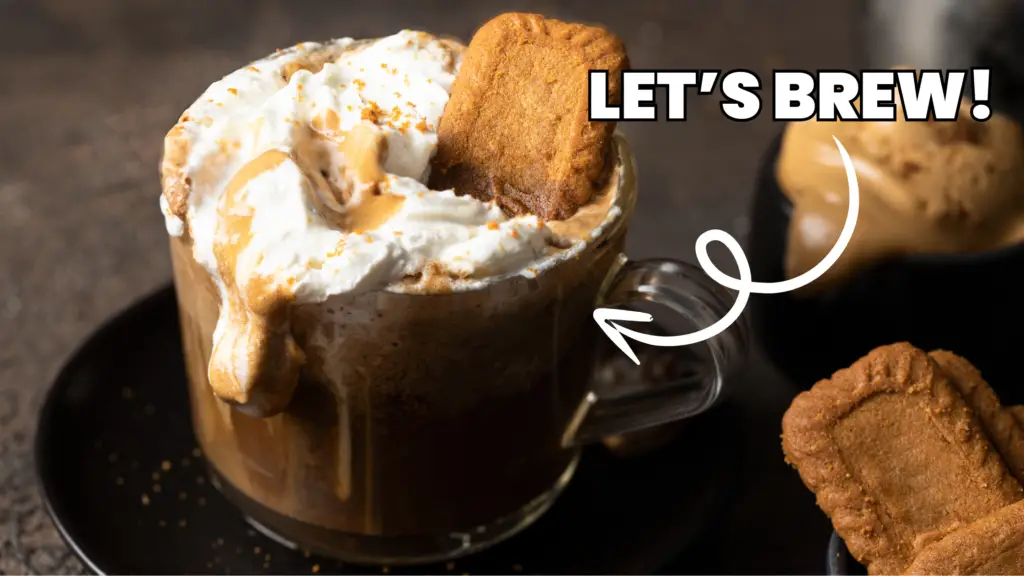
1. Brew Espresso
To start, you need to brew the perfect espresso or strong coffee.
If you have an espresso machine, use it to pull 2-4 shots of espresso.
The number of shots depends on how strong you like your latte and how many people you are brewing for.
If you don’t have an espresso machine, you can use a strong coffee maker.
Ensure you use finely ground coffee for a rich, bold flavor.
Tips for different brewing methods:
- For a strong coffee maker, use more coffee grounds than usual to achieve a concentrated brew.
- A Moka pot or AeroPress can also produce a strong, espresso-like coffee if you don’t have an espresso machine.
Step 2: Heat and Froth Milk
Next, heat 12 oz of your preferred milk.
You can do this in a microwave or on the stovetop.
Heat the milk until it’s hot but not boiling—aim for around 150-160°F.
Techniques for frothing milk:
- Milk Frother: Use an electric milk frother for best results. Froth until the milk doubles in volume and has a creamy texture.
- Handheld Frother: If you have a handheld frother, submerge it in the heated milk and froth until smooth and foamy.
- Mason Jar: Alternatively, pour the hot milk into a mason jar, screw the lid on tightly, and shake vigorously until frothy. Be cautious when opening the lid as pressure might build up.
Step 3: Combine Espresso and Cookie Butter
Pour the hot espresso into a large mug and add 3 teaspoons of cookie butter.
Stir well until the cookie butter is fully dissolved.
Using hot espresso is crucial as it helps melt the cookie butter smoothly, ensuring a well-blended mixture.
Step 4: Add Frothed Milk
Pour the frothed milk over the espresso and cookie butter mixture.
Hold back the foam with a spoon initially and pour the liquid milk first.
Then, spoon the foam on top for a beautiful finish.
This layering technique ensures a smooth and creamy texture.
Step 5: Garnishing
To make your latte extra special, garnish it with whipped cream.
Drizzle some warmed cookie butter over the top and sprinkle a pinch of ground cinnamon.
For an added treat, crumble Biscoff cookies on top or serve them on the side.
These garnishes not only enhance the flavor but also make your latte look café-quality.
Nutritional Breakdown (per serving)
- Calories: Approximately 319 kcal
- Fat: 15g
- Saturated Fat: 7g
- Carbohydrates: 32g
- Sugars: 25g
- Protein: 8g
- Sodium: 100mg
These values can vary based on the specific brands and types of ingredients used, especially the type of milk and the amount of cookie butter.
Using whole milk, for example, will result in a higher fat content compared to almond or oat milk.
Detailed Breakdown
- Calories: The latte’s calories come mainly from the milk and cookie butter. Each tablespoon of cookie butter adds about 90 calories.
- Fat: The majority of the fat content is from the cookie butter and milk. Cookie butter is high in fat, contributing to the total fat and saturated fat values.
- Carbohydrates: Sugars in the cookie butter and milk significantly contribute to the carbohydrate count.
- Protein: Protein content varies depending on the type of milk used. Dairy milk typically has higher protein compared to some non-dairy alternatives.
- Sodium: A pinch of sea salt adds a small amount of sodium, with most of it coming from the cookie butter and milk.
Tips for Making the Best Cookie Butter Latte
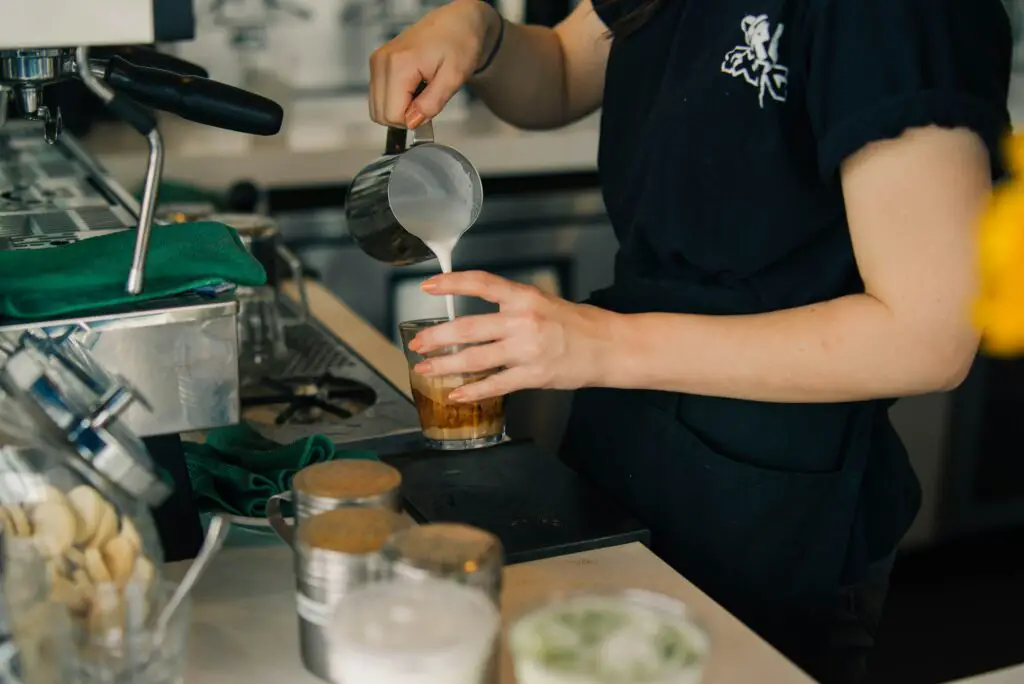
Opt for Homemade Cookie Butter Syrup
For an authentic flavor, make your own cookie butter syrup at home.
This enhances the latte with a rich, genuine Biscoff taste.
Homemade syrup allows you to control the sweetness and consistency, ensuring a perfect blend every time.
Use High-Quality Espresso or Very Strong Brewed Coffee
The quality of your coffee is crucial.
Use high-quality espresso beans or a very strong brewed coffee.
Freshly ground beans offer the best flavor.
If you don’t have an espresso machine, opt for a Moka pot or AeroPress to achieve a concentrated brew.
The Ideal Milk Temperature for Frothing
Milk temperature plays a significant role in frothing.
Heat your milk to around 150-160°F.
This temperature ensures the milk is hot enough to froth well without scalding.
Properly frothed milk should be creamy and smooth, adding a luxurious texture to your latte.
Importance of Garnishes for Texture and Taste
Garnishes not only add visual appeal but also enhance the flavor and texture of your latte.
Whipped cream, a drizzle of warmed cookie butter, and a sprinkle of ground cinnamon add layers of taste and texture.
Crumbled Biscoff cookies provide a delightful crunch, making each sip more enjoyable.
Adjusting Sweetness and Spice Levels According to Preference
Everyone’s taste is different, so feel free to adjust the sweetness and spice levels.
If you prefer a sweeter drink, add a bit more cookie butter or a touch of brown sugar.
For a spicier note, sprinkle a little extra cinnamon or nutmeg.
Customizing these elements ensures your cookie butter latte suits your personal taste perfectly.
Variations
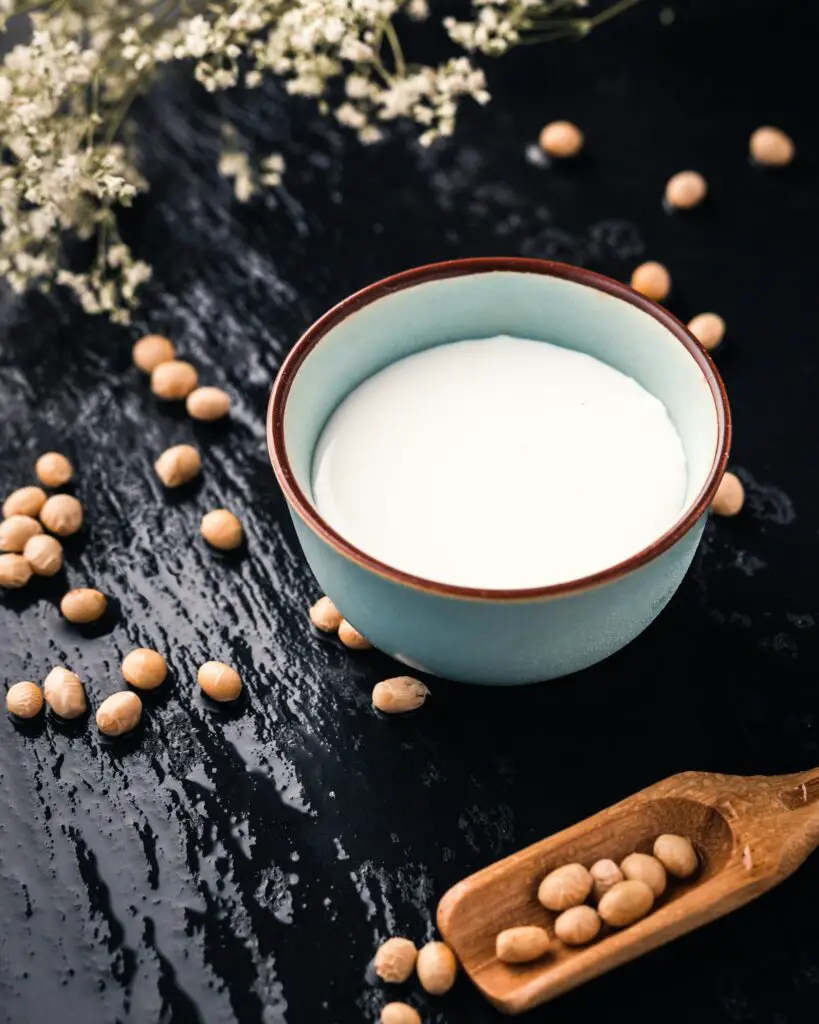
Iced Cookie Butter Latte
Craving something cool? Try an iced cookie butter latte.
Start by dissolving 3 teaspoons of cookie butter in 2-4 shots of hot espresso.
Stir until the cookie butter is completely melted.
Once combined, let the mixture cool slightly.
Fill a glass with ice, pour the cookie butter espresso over the ice, and then add 12 oz of cold milk.
Stir gently to combine.
This method ensures the cookie butter blends smoothly without clumping, giving you a deliciously chilled latte.
Vegan and Dairy-Free Options
You can easily make your cookie butter latte vegan or dairy-free.
Substitute the regular milk with non-dairy alternatives like almond, soy, or oat milk.
These options froth well and add a subtle flavor twist.
When frothing non-dairy milk, ensure it’s fresh and cold for the best results.
Oat milk is particularly creamy and froths nicely, making it a popular choice for lattes.
Enhanced Flavors
Add extra depth to your latte with a pinch of cinnamon or nutmeg.
These spices complement the cookie butter’s flavor, making your drink even more delicious.
For a sweeter twist, try flavored syrups like vanilla or caramel.
Simply add a splash to your espresso before mixing in the milk.
These additions enhance the taste and make your cookie butter latte uniquely yours.
Conclusion
The cookie butter latte is a delightful blend of sweet, spiced flavors and rich espresso, making it a perfect treat for any coffee lover.
Its popularity on social media speaks to its deliciousness and easy-to-make recipe.
Try making this cozy and indulgent drink at home to enjoy its unique taste and comforting warmth.
Don’t forget to share your creations on social media and let others see your barista skills!


